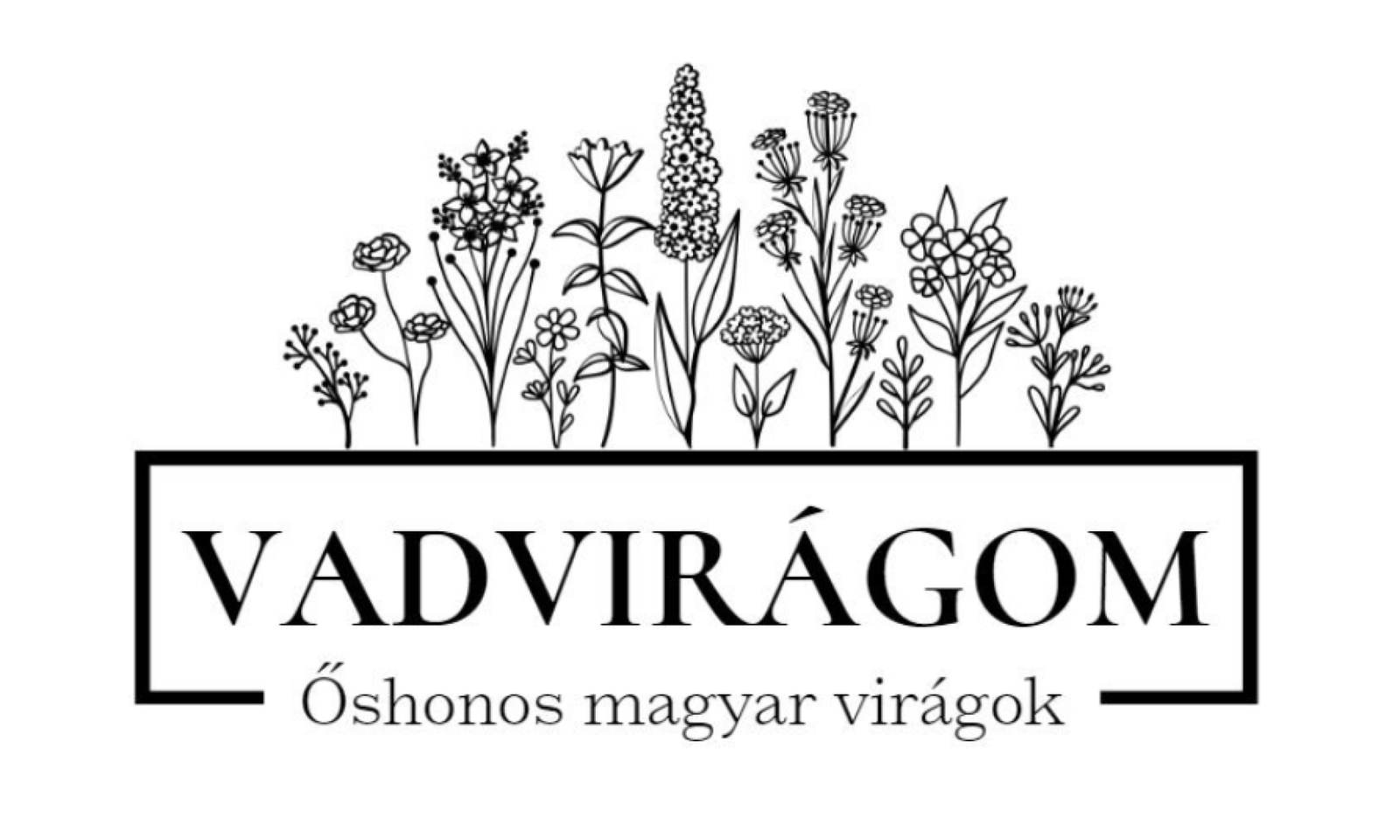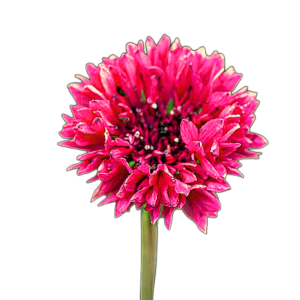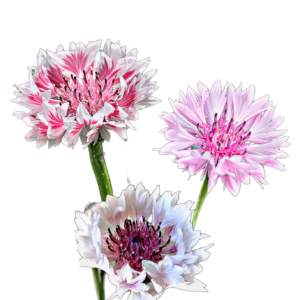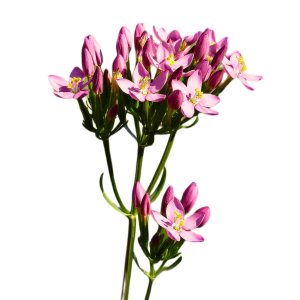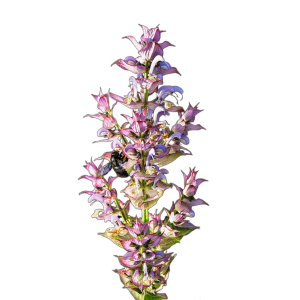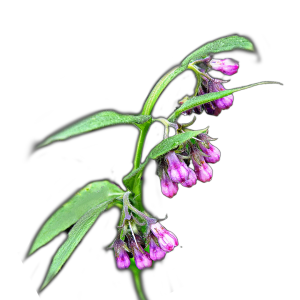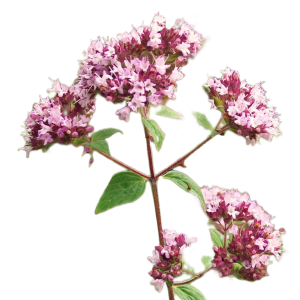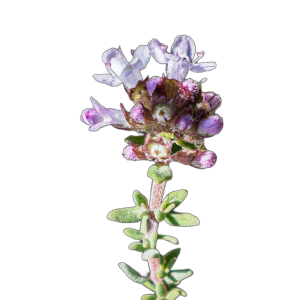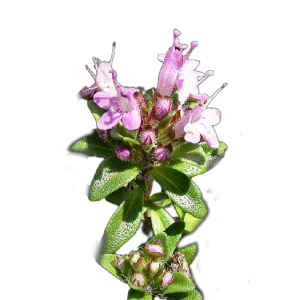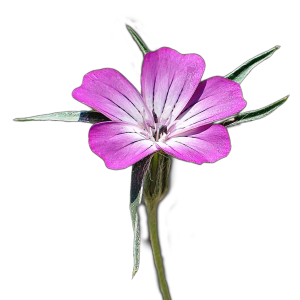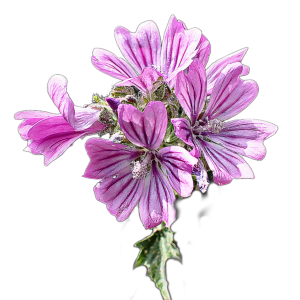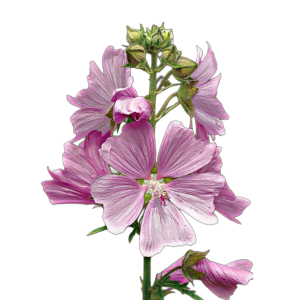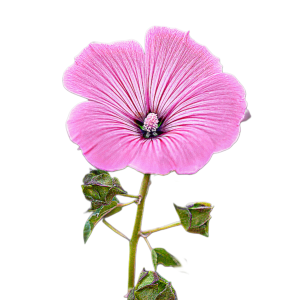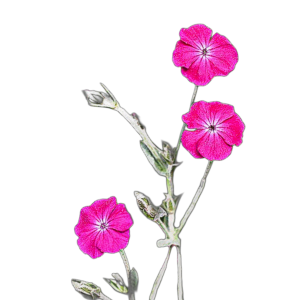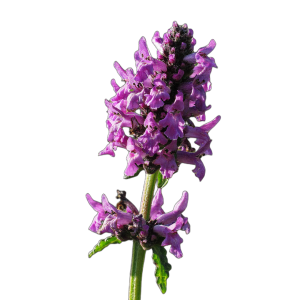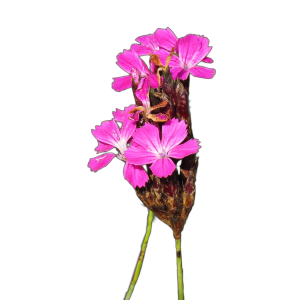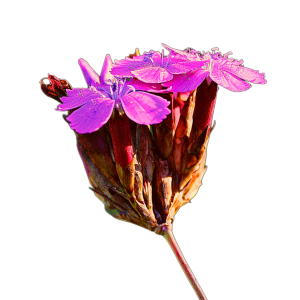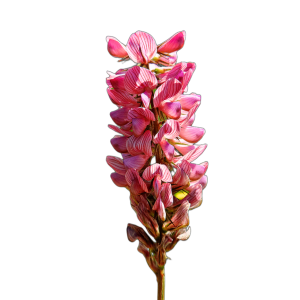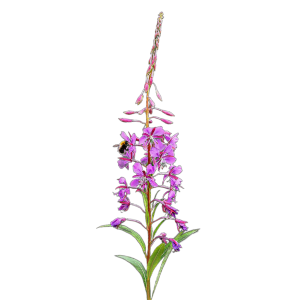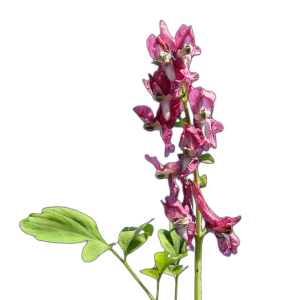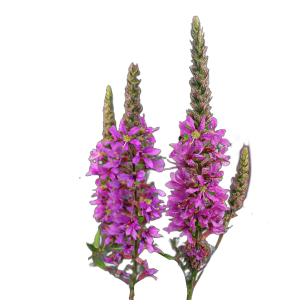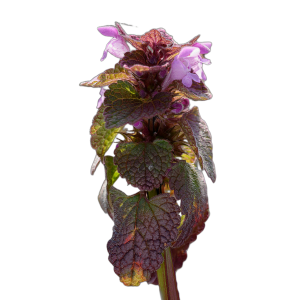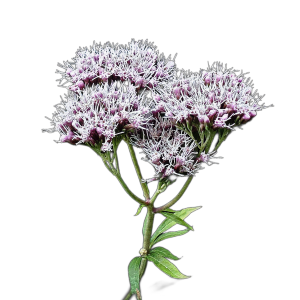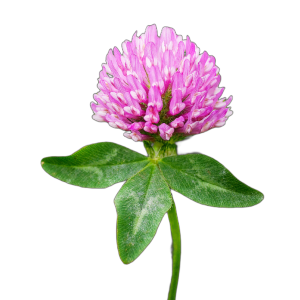“Baltacim (Onobrychis viciifolia) 15g, ~750 mag” a kosárba helyezve. Kosár
-
-
Add to basket
- Add to wishlistAdd to wishlist
- biennial
Common burdock (Arctium lappa) 0,5g, ~30 seeds
- 875 Ft
- The common burdock (Arctium lappa) is a native Hungarian wildflower, which attracts hordes of pollinators with its impressive flowers that grow the year after sowing. Many people mistake it for thistle, but unlike thistle, its leaves are not prickly. Feel free to stroke the first year's growth of the leaf buds :) In 17th century Europe, it was used to treat burns and tumours, while in Japan its root has been consumed for thousands of years, where it is known as Gobo.
Add to wishlistAdd to wishlist -
Add to basket
-
-
Add to basket
- Add to wishlistAdd to wishlist
- also for window box, annual, bee-keeper, native
Poppy colour mix (Papaver rhoeas "Shirley Single Mix") 1g, ~9000 seeds
- 875 Ft
- Who should be introduced to the most iconic wildflower, the reddish pearl of the wheat fields? Fortunately, wildflowers, including poppies (Papaver rhoeas), are making a comeback in gardens these days and are slowly losing their weed status, as their early flowering makes them a very important food source for many of our solitary bees. This mixed poppy colour mix consists mainly of pink flowers, but other colours may also be available. It has a really light, soft and graceful look...
Add to wishlistAdd to wishlist -
Add to basket
-
-
Add to basket
- Add to wishlistAdd to wishlist
- also for window box, annual, bee-keeper, native
Cornflower - pink (Centaurea cyanus "Red Ball") 1g, ~220 seeds
- 875 Ft
- The cornflower (Centaurea cyanus) is one of our best known and most loved wild flowers, along with the poppy. Loved by pollinators, it flowers for a relatively long time in the garden. It is a medicinal herb, its flowers are edible, it used to be used to make dye, but it is also excellent for tea, which also gives it a beautiful colour. Early spring sowing with early flowering is an important time for pollinators, but it can also be sown in the autumn, in which case it will have bushier growth in spring/early summer. This...
Add to wishlistAdd to wishlist -
Add to basket
-
-
Add to basket
- Add to wishlistAdd to wishlist
- also for window box, annual, bee-keeper, native
Cornflower - pink colour mix (Centaurea cyanus "Classic romantic") 1g, ~220 seeds
- 875 Ft
- The cornflower (Centaurea cyanus) is one of our best known and most loved wild flowers, along with the poppy. Loved by pollinators, it flowers for a relatively long time in the garden. It is a medicinal herb, its flowers are edible, it used to be used to make dye, but it is also excellent for tea, which also gives it a beautiful colour. Early spring sowing with early flowering is an important time for pollinators, but it can also be sown in the autumn, in which case it will have bushier growth in spring/early summer. This...
Add to wishlistAdd to wishlist -
Add to basket
-
-
Add to basket
- Add to wishlistAdd to wishlist
- perennial, herb, bee-keeper, native
Centaurium erythrea 0,01g, ~990 seeds
- 875 Ft
- Centaurium erythrea is one of our most beautiful wild flowers. Its pink, star-shaped flowers, arranged in umbels, only open in sunshine. Its medicinal properties have been known since antiquity, and its active ingredients stimulate digestion and bile flow. The latter, together with its bitter taste, makes it an indispensable ingredient in stomachic dishes. Its extraction is not easy, it is recommended only for seed-sowing ninjas and requires patience and luck. Properties: other names: centaurea, gentian, sturgeon's weed, centaurea,...
Add to wishlistAdd to wishlist -
Add to basket
-
-
Add to basket
- Add to wishlistAdd to wishlist
- 10/10 pollinator, perennial, biennial, butterfly favourite, bee-feeder, native
Musk sage (Salvia sclarea) 2g, ~500 seeds
- 875 Ft
- Musk sage (Salvia sclarea) is not native to our area, but it is a great choice for our gardens. Muscadine sclare is a beautiful large-flowered pink or purple sage originally from the Mediterranean, and unlike other sage species it is a biennial. Sometimes white varieties are also found in nurseries. It is a particular favourite of blue woodpeckers, as shown in the picture. The essential oils made from its flowers and leaves are often used in food, cosmetics, and...
Add to wishlistAdd to wishlist -
Add to basket
-
-
Add to basket
- Add to wishlistAdd to wishlist
- 10/10 pollinator, perennial, butterfly favourite, bee-feeder, native
Red-leaved Sage (Salvia horminum "Pink Sundae") 0,5g, ~175 seeds
- 875 Ft
- The sage (Salvia horminum) is a special kind of sage originally from the Mediterranean. Unlike other sage species, it is an annual and does not produce flowers but colourful pink leaves, in the case of 'Pink Sundae'. A very easy to grow annual, it is the perfect space filler for open spring bulbs, but can also be used as cut flowers in bouquets. If you keep the flowers/stems cut, they can decorate your garden all summer long, or they can be used as a...
Add to wishlistAdd to wishlist -
Add to basket
-
-
Add to basket
- Add to wishlistAdd to wishlist
- perennial, herb, bee-keeper, native
Black Coneflower (Symphytum officinale) 0,5g, ~50 seeds
- 875 Ft
- The black needlewort (Symphytum officinale) is a very well-known native herb, mostly used externally as an ointment for broken bones, sprains, bruises, sprains and similar conditions. The root and leaves are collected and used to make ointments, tinctures and poultices. Its use internally is not recommended because of its alcohol content of pyrrolizidine, which is harmful to the liver. Like other borage species, such as medical atracil, teriy...
Add to wishlistAdd to wishlist -
Add to basket
-
-
Add to basket
- Add to wishlistAdd to wishlist
- 10/10 pollinator, annual, bee-feeder
Milk thistle (Silybum marianum) 10 g, ~350 seeds
- 875 Ft
- The marjoram (Silybum marianum) is a medicinal plant native to the Mediterranean. Its thistle-like flowers are an excellent source of nectar in the summer months, while birds are welcome visitors in the winter months. It is easily distinguished from thistles mainly by its marbled leaves. Historically, marijuana was used in folk medicine mainly for its liver-protective properties; the active ingredient in the plant, silymarin, contributes to liver cell regeneration. The ancient Greeks and Romans...
Add to wishlistAdd to wishlist -
Add to basket
-
-
Add to basket
- Add to wishlistAdd to wishlist
- 10/10 pollinator factor, annual, butterfly favourite
Butterfly Flower colour mix (Cosmos bipinnatus "Mix") 2g, ~300 seeds
- 875 Ft
- The butterfly blossom (Cosmos bipinnatus) was introduced because of the new Butterfly Lure 2.0 and Mama's Garden seed mix, as it is an irresistible nectar source for adult butterflies and flowers in the year of sowing, unlike many native species. It originated in Mexico, where local people planted it as an ornamental in gardens and the flowers were used on religious festivals. It was introduced to Europe in the 18th century, where it quickly became popular...
Add to wishlistAdd to wishlist -
Add to basket
-
- Out of StockRead more
- Add to wishlistAdd to wishlist
- 10/10 pollinating factor, perennial, herb, medicinal plant, butterfly favourite, bee-feeder, native
Oregano (Origanum vulgare) 1g, ~12000 seeds
- 875 Ft
- Oregano (Origanum vulgare) is a wild Hungarian variety of the spice known as pitch grass, which is most commonly known as pitch grass or wild marjoram. It has a less intense flavour than the Mediterranean variety used in Bolognese sauce, but it can be used as a spice and herb. It's also one of our most attractive wild flowers for pollinators, visited by a cavalcade of solitary bees, bumblebees and butterflies for nectar. Properties.
Add to wishlistAdd to wishlist -
-
-
Add to basket
- Add to wishlistAdd to wishlist
- also for window box, edible flower, perennial, herb, herbaceous plant, beekeeper, native, tea
Garden Thyme (Thymus vulgaris) 1g, ~4700 seeds
- 875 Ft
- Garden thyme (Thymus vulgaris) is an herb of Mediterranean origin, related to the narrow-leaved thyme that is also native to our country. Its long flowering period (June to September) also makes it a very good pollinator and it is visibly adored and frequented by bees and butterflies. As a herb, garden thyme is the most commonly used, mostly used to flavour meats, but it also goes very well with game. It is also used as a medicinal herb, expectorant, antispasmodic...
Add to wishlistAdd to wishlist -
Add to basket
-
- Out of StockRead more
- Add to wishlistAdd to wishlist
- also for window box, edible flower, perennial, herb, herbaceous plant, beekeeper, native, tea
Thymus serpyllum 0,25g, ~1950 seeds
- 875 Ft
- Narrow-leaved thyme or field thyme (Thymus serpyllum) is a native Hungarian herb that can be found in many places in nature. Its long flowering period (from May to September) makes it a very good pollinator and it is visibly adored and frequently visited by bees and butterflies. It is also increasingly being used abroad as a flowering, care-free weed. Its short stature, beautiful flowers and drought tolerance make it a really good substitute for lawns....
Add to wishlistAdd to wishlist -
-
-
Add to basket
- Add to wishlistAdd to wishlist
- annual, beekeeping, native
Conkoly (Agrostemma githago) 5g, ~550 seeds
- 875 Ft
- Seed concolor (Agrostemma githago) is an old annual wildflower, once considered a weed, and most often seen in cereal fields in the past. Unfortunately, it has now become so scarce throughout Europe due to the use of herbicides that it is now protected. Its seeds are quite poisonous and used to spoil the quality of flour when mixed with it, so it had to be discarded and was disliked. It's also beautiful, pink, easy to grow and drought tolerant,...
Add to wishlistAdd to wishlist -
Add to basket
-
-
Add to basket
- Add to wishlistAdd to wishlist
- annual, beekeeping
Wood mallow (Malva sylvestris "Zebrina") 0,5g, ~100 seeds (Copy)
- 875 Ft
- The forest mallow "Zebrina" (Malva sylvestris "Zebrina") is a cultivar of the forest mallow (Malva sylvestris), which is also native to our country. The forest mallow (Malva sylvestris) is our perennial wildflower, whose pollen is very popular with many bee species. Sometimes you can see bees drowning in the pollen of mallow :) A delicacy known as pap cheese. In ancient times, its leaves were used to make stew. The whole plant is edible and medicinal, and the flowers are used to make tea.
Add to wishlistAdd to wishlist -
Add to basket
-
-
Add to basket
- Add to wishlistAdd to wishlist
- perennial, bee-keeper, native
Wood mallow (Malva sylvestris) 1g, ~230 seeds
- 875 Ft
- The wood mallow (Malva sylvestris) is our perennial wildflower, whose pollen is much loved by many bee species. Sometimes you can see bees drowning in the pollen of mallow :) A delicacy known as pap cheese. In ancient times, its leaves were used to make stew. The whole plant is edible and medicinal, and the flowers can be made into tea. Applied externally, the leaves are excellent for wasp and scorpion stings and skin irritations. Several cultivated varieties are annuals, their pollinator attraction properties...
Add to wishlistAdd to wishlist -
Add to basket
-
-
Add to basket
- Add to wishlistAdd to wishlist
- perennial, bee-keeper
Mallow (Malva sylvestris ssp. mauritiana) 1g, ~230 seeds
- 875 Ft
- The mallow (Malva sylvestris ssp. mauritania) is a subspecies of the forest mallow (Malva sylvestris), which is a European species native to the south of us. Although it can almost be regarded as a native species, as it has been known and cultivated in Hungary for centuries for its medicinal properties. As a medicinal herb, the dried petals of the mallow are brewed as a tea, which can be used for coughs, asthma and other upper respiratory ailments. And last but not least, it is a fantastic source of pollen: it...
Add to wishlistAdd to wishlist -
Add to basket
-
-
Add to basket
- Add to wishlistAdd to wishlist
- perennial, bee-keeper, native
Musk mallow (Malva moschata) 0,5g, ~250 seeds
- 875 Ft
- The musk mallow (Malva moschata) is a native Hungarian wildflower, whose pollen, like that of the forest mallow, is loved by many bee species. It gets its name from its distinctive scent, a perfume-like musky smell, hence the name. If you don't know what musk smells like, you should definitely try it :) Growing bushy, it can be a perfect alternative to the often deadly alien pink/splendid grove sedge that is often a threat to ducktail sedge. It blooms all summer, from June to September,...
Add to wishlistAdd to wishlist -
Add to basket
-
-
Add to basket
- Add to wishlistAdd to wishlist
- perennial, bee-keeper
Garden sage (Lavatera trimestris "Silver Cup") 1g, ~150 seeds
- 875 Ft
- The garden mallow (Lavatera trimestris) is a species native to the Mediterranean region, often planted as an ornamental. It is a real Jolly Joker: in the spring, around May, it sheds its seeds and grows very quickly, producing huge hibiscus-like flowers from June until frost. If you're the impatient type and want to enjoy a quick spring scattering, it's a great choice. It can grow quite large, up to 80 cm...
Add to wishlistAdd to wishlist -
Add to basket
-
-
Add to basket
- Add to wishlistAdd to wishlist
- perennial, herb, bee-keeper, native
Medical soap grass (Saponaria officinalis) 1g, ~750 seeds
- 875 Ft
- Medical soapwort (Saponaria officinalis) is a native Hungarian wildflower. As its name suggests, it can also be used for washing hands. If not as a soap, then as a herb or pollinator-attracting ornamental plant, it can have a great place in your garden. Properties.
Add to wishlistAdd to wishlist -
Add to basket
-
-
Add to basket
- Add to wishlistAdd to wishlist
- perennial, butterfly, bee-feeder, native
Velvet thyme (Lychnis coronaria) 0,1g, ~190 seeds
- 875 Ft
- The velvet cuckoo-grass (Lychnis coronaria) is a native Hungarian wildflower that is protected. Fortunately, this native flower is now widely planted in the garden, with its beautiful dark pink flowers and silvery leaves. Its wintergreen (or wintersilver? :) ) leaves do not retract in winter. It is a short-lived perennial, but it sows its seeds well and spreads well. An excellent choice for rock gardens and mixed flower beds. It is easy to...
Add to wishlistAdd to wishlist -
Add to basket
-
- Out of StockRead more
- Add to wishlistAdd to wishlist
- edible flower, perennial, butterfly, bee-feeder, native
Ryegrass (Lychnis flos-cuculi) 0,25g, ~1500 seeds
- 875 Ft
- The meadow cuckoo flower (Lychnis flos-cuculi) is a very graceful and unique-looking, beautiful wild flower. Its nectar makes it very popular with pollinators, especially butterflies. Its beautiful flowers are edible and can be a beautiful decoration on the plate. Latin name: Lychnis flos-cuculi Family: Caryophyllaceae Life cycle: perennial Flowering time: May - July Size: 30-50 cm Soil: average, moist Growing area: sunny, shady Seeds origin:...
Add to wishlistAdd to wishlist -
-
-
Add to basket
- Add to wishlistAdd to wishlist
- perennial, herb, bee-keeper, native
Medicinal cat's-root (Valeriana officinalis) 0,5g, ~800 seeds
- 875 Ft
- Medicinal cat's-root (Valeriana officinalis) is one of our oldest herbs, and is still cultivated today for its active ingredients. It is much loved by pollinators for both its pollen and nectar. It is a very ornamental, beautiful flower whose fragrance has been compared to marshmallows. In the Middle Ages it was used to make perfumes. Properties: other names: cat's-tail, valerian, valerian, valerian, valerian root, nardus Latin name: Valeriana officinalis family: Caprifoliaceae/Valerianaceae life-span: perennial...
Add to wishlistAdd to wishlist -
Add to basket
-
-
Add to basket
- Add to wishlistAdd to wishlist
- perennial, herb, butterfly, bee-feeder, native
Medical pure grass (Stachys officinalis/Betonica officinalis) 0,1g, ~65 seeds
- 875 Ft
- A beautiful native wildflower is the medical buttercup (Stachys officinalis/Betonica officinalis), which is worth keeping in your garden for its beauty alone. Its nectar makes it a very attractive flower for bumblebees and butterflies, along with other species of the orphan family. As its name suggests, it has also been widely used as a medicinal plant: as a tea for coughs, it has also been found to be effective against rheumatism and epilepsy. Properties.
Add to wishlistAdd to wishlist -
Add to basket
-
-
Add to basket
- Add to wishlistAdd to wishlist
- perennial, butterfly, bee-feeder, native
Bareroot (Dianthus carthusianorum) 0,1g, ~80 seeds
- 875 Ft
- Barnyard grass (Dianthus carthusianorum) is a beautiful native wildflower that has a great place in our gardens. Butterflies, like other carnations such as meadow cuckoo-grass, are particularly keen for its nectar. It gets its Latin name from the Carthusian monks who were fond of planting it in the gardens of their monasteries. This is probably the origin of the Hungarian name for barnyardgrass. The Hungarian carnation (Dianthus pontederae) and the field carnation are very similar species...
Add to wishlistAdd to wishlist -
Add to basket
-
-
Add to basket
- Add to wishlistAdd to wishlist
- perennial, butterfly, bee-feeder, native
Hungarian Carnation (Dianthus pontederae) 0,1g, ~200 seeds
- 875 Ft
- The Hungarian carnation (Dianthus pontederae) is a true Carpathian Basin endemic, native species, as its name suggests. It is found only here in the world, but interestingly it is very little known, even though it is a beautiful ornamental plant. Its flowers are a little similar to those of barnyard grass. Butterflies, like other carnations such as meadow cuckoo-grass, are particularly keen for its nectar. The Hungarian carnation prefers dry places, is relatively undemanding, and...
Add to wishlistAdd to wishlist -
Add to basket
-
-
Add to basket
- Add to wishlistAdd to wishlist
- 10/10 pollinator factor, perennial, butterfly favourite, bee-feeder, nitrogen bomb
Baltacim (Onobrychis viciifolia) 15g, ~750 mag
- 875 Ft
- The buttercup (Onobrychis viciifolia) is a fantastically versatile and useful plant that should be in our gardens for many reasons. It's a good fodder plant, mainly known for this, but it also produces lots of nectar and is a magnet for bees and butterflies. It is a food plant for many butterfly species, along with its cousin, the sand moth. It can also be a useful part of the garden because of its nitrogen-fixing...
Add to wishlistAdd to wishlist -
Add to basket
-
- Out of StockRead more
- Add to wishlistAdd to wishlist
- perennial, herb, butterfly favourite, beekeeper
Earth deréce (Epilobium angustifolium) 0,05g, ~1100 seeds
- 875 Ft
- The woodland buttercup (Epilobium angustifolium) is a beautiful native wildflower, somewhat similar to the meadow willow (Lythrum salicaria). Its large pink flowers are real pollinator magnets and it is also a food plant for many butterflies, including many species of hemp (gall hemp, grape hemp, striped hemp, dwarf hemp, striped hemp, bat hemp, red hemp). It is called fireweed because it is a pioneer plant that often takes over an area after a fire. Lord of the Rings...
Add to wishlistAdd to wishlist -
-
-
Add to basket
- Add to wishlistAdd to wishlist
- annual, beekeeping, native
Garden larkspur (Consolida ajacis "Carmine King") 0,5g, ~200 seeds
- 875 Ft
- Garden larkspur (Consolida ajacis) is a native European wildflower, the cultivated form of which is the 'Carmine King' variety. One of the easiest plants to grow, it is a successful annual variety for both autumn and spring sowing, and is easy to grow. This variety has a beautiful dark pink colour and although it has double flowers, pollinators will fit in. It flowers for a very long time, almost all summer, and earlier, even in May, if sown in autumn...
Add to wishlistAdd to wishlist -
Add to basket
-
-
Add to basket
- Add to wishlistAdd to wishlist
- perennial, herb, butterfly, bee-feeder, native
Corydalis cava/bulbosa 0,5g, ~80 seeds
- 875 Ft
- The Corydalis cava is a small Hungarian wildflower native to Hungary, which can cover the forest undergrowth in early spring when it blooms. It is a very important wildflower for pollinators: both because of its early flowering, when not many nectar sources are available, and because one of our butterfly species, the Apollo butterfly, is exclusively fed on Celtic butterflies (besides the pseudocathedral Celtic butterfly, we also find its cousin, the fingered Celtic butterfly). It likes...
Add to wishlistAdd to wishlist -
Add to basket
-
-
Add to basket
- Add to wishlistAdd to wishlist
- perennial, butterfly, bee-feeder, native
Ryegrass (Lythrum salicaria) 0,1g, ~2400 seeds
- 875 Ft
- Meadow willow (Lythrum salicaria) is one of our most attractive native Hungarian wildflowers, somewhat similar to the woodland willow (Epilobium angustifolium), but much better known. It prefers wetter habitats, and is often found in marshy areas, bordering water banks. Its long, pink flowers are a great favourite with pollinators. The meadow willow is relatively tall at 100-180 cm, while its smaller relative, the willow willow (Lythrum virgatum) is much shorter, only...
Add to wishlistAdd to wishlist -
Add to basket
-
-
Add to basket
- Add to wishlistAdd to wishlist
- perennial, can be sown in grass, beekeeping, nitrogen bomb, native grassland, native, green manure
Coronella varia (Securigera/Coronilla varia) 5g, ~1500 seeds
- 875 Ft
- The variegated coronilla (Securigera/Coronilla varia) is a useful nitrogen-fixing native perennial and a valuable bee-feeder due to its long flowering period. It is slow-growing at first, then spreads with creeping stems. Mildly toxic, do not put in bean soup :) Properties: other names: coronet Latin name: Securigera varia / Coronaria varia family: Fabaceae life: perennial flowering time: May-November size: 20-40 cm soil: average growing place: sunny, semi-shade other: nitrogen fixing, slightly toxic...
Add to wishlistAdd to wishlist -
Add to basket
-
- Out of StockRead more
- Add to wishlistAdd to wishlist
- 10/10 pollinator, annual, edible, herb, bee-feeder, native
Red Orris (Lamium purpureum) 0,1g, ~145 seeds
- 875 Ft
- The red orris (Lamium purpureum) is very valuable for pollinators, as its early spring flowering (if sown in autumn) provides plenty of food for the bumblebee queens that awaken from hibernation. Its fresh shoots are a reddish-reddish-reddish colour, which is how it can be distinguished from other orphan species and from the similar round-leaved bush-flower. Properties: other names: bee-weed, bee-flower, orphan buttercup Latin name: Lamium purpureum family: Lamiaceae life: annual flowering time: march-september size: 10-25 cm soil:...
Add to wishlistAdd to wishlist -
-
- Out of StockRead more
- Add to wishlistAdd to wishlist
- perennial, butterfly, bee-feeder, native
Sweet hemp (Eupatorium cannabinum) 0,25g, ~1100 seeds
- 875 Ft
- The sedge hemp (Eupatorium cannabinum) is a native Hungarian wildflower that likes wetter places, so it is often found along waterways and ditch banks. Its whitish-pink spikes are irresistibly attractive to butterflies, perhaps attracting more butterflies than the summer lilac. It has been much used as a medicinal herb, but there are now warnings about its pyrrolizidine alkaloid content, which is similar to that of black coneflower and may be harmful to the liver. Its seeds are prone to spreading. Properties: other names:...
Add to wishlistAdd to wishlist -
-
-
Add to basket
- Add to wishlistAdd to wishlist
- edible, perennial, herb, beekeeper, nitrogen bomb, native, nativegrassland
Red here (Trifolium pratense) 10g, ~6500 seeds
- 875 Ft
- Red testicle (Trifolium pratense) is a coloured version of white testicle. The nectar in its flowers is deeper than in the white testicle, so it is mainly visited by long-tongued bees, such as bumblebees. But it often produces so much nectar that even shorter-tongued bees such as honeybees can reach it. All bee species collect pollen from it. It can be a great colourful addition to your lawn! It is also used as a medicinal plant. Properties: latin...
Add to wishlistAdd to wishlist -
Add to basket
